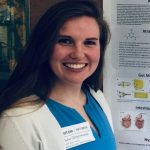I am a HFSP postdoctoral fellow with Prof. Andrew Oates at EPFL, Lausanne and I did my PhD with Prof. Stephan Grill at MPI-CBG, Dresden. My major research interest is in understanding biophysical mechanisms by which (a)symmetries are established in the three principal body axes of embryos. I have extensive experience in working with both C. elegans and zebrafish model systems and my expertise lies in performing advanced microscopy and developing custom image analysis algorithms.
Metabolic regulation of species-specific developmental rates
Mechanical heterogeneity along single cell-cell junctions is driven by lateral clustering of cadherins during vertebrate axis elongation
Physical constraints on early blastomere packings
Self-organised symmetry breaking in zebrafish reveals feedback from morphogenesis to pattern formation
Embryonic geometry underlies phenotypic variation in decanalized conditions
Planar differential growth rates determine the position of folds in complex epithelia
AND
Buckling of epithelium growing under spherical confinement
Force inference predicts local and tissue-scale stress patterns in epithelia
Transcriptional initiation and mechanically driven self-propagation of a tissue contractile wave during axis elongation












